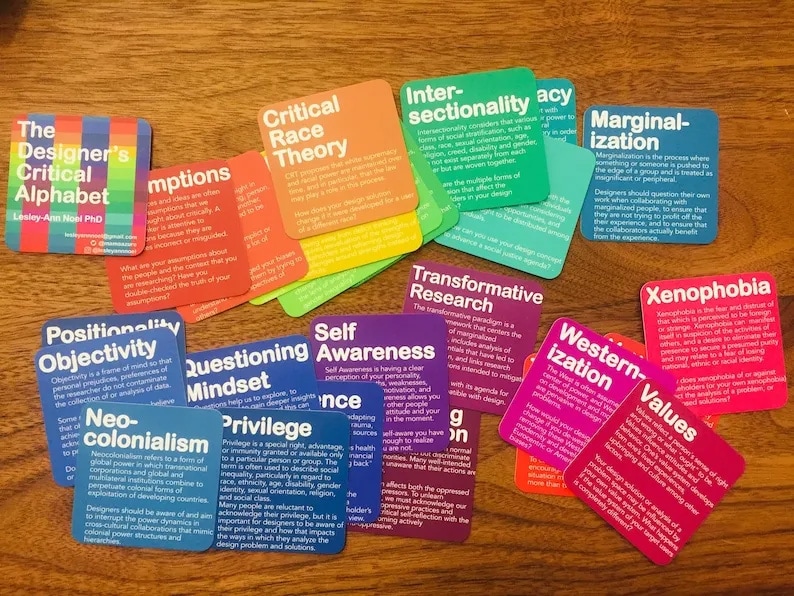Inclusive Design — More Than Just a Buzzword
4 min read • Feb 10, 2022
By Zariah Cameron

Inclusive design is at the core of innovation. It’s how we cultivate and create a sense of community within our work. It’s not just a process, but an ideology applied throughout the entire experience of how we think about solutions, internally and externally. It’s a set of principles that guide our decisions and processing. And it’s the foundation on which to build the core values and vision of what Ally stands for.
Buzzword to Real Change
Within the last couple of years, inclusive design has regressed into a buzzword in the tech world in which a team must meet a specific set of standards. It’s similar to how some engage with the Americans with Disabilities Act (ADA) standards — they may check all the required surface-level boxes, but the outcome may not improve user accessibility. So many design teams are still coming from a Eurocentric perspective, the perspective that solely focuses on Eurocentric cultures or history as the preeminent, excluding any other cultures around the world, without reflecting the same diversity of their customer base.
We need to move outside the “stamp of approval” sort of inclusivity and begin pushing towards an equity-centered design pedagogy. According to the Creative Reaction Lab, equity-centered community design is “a unique, creative, problem-solving process based on equity and humility, integrating history and practices, addressing power dynamics, and co-creating with the community.”
Equity doesn’t mean shaming or guilting people. It means telling the truth and understanding how past inequities impact the present and future. We need to address the realities of how the institutional system of oppression has subconsciously steered our design solutions and practices and make improvements going forward.
Our goal is not to make the inclusive exclusive. Inclusive doesn’t mean destruction. It means change and evolution. We can’t implement new, inclusive design practices if the people adopting them aren’t growing in their thought processes. Antionette Carroll, founder and CEO of Creative Reaction Lab, described it perfectly: “I’m not looking for process adoption, I’m looking for mindset change.”
InclusivALLY
For the past several weeks I’ve had the pleasure of being a part of our small but mighty Inclusive Design team. Still in its infancy, we’ve begun to make great headway in developing a more inclusive framework for how we design at Ally. We’ve acknowledged inclusive design goes far beyond just accessibility, and we’ve been creating the necessary steps to reflect that.
When I joined the team, I introduced “ The Designer’s Critical Alphabet ” card deck, developed by Dr. Lesley Ann Noel, a design professor at NC State University and a design thinking strategist for Social Impact. Through these cards I conducted a mini-ideation session on the first three cards in the deck: assimilation, assumptions, and bias. This discussion sparked the development of how to implement these card principles into some of the inclusive practices and tools we wanted to create.

Last week, we had the pleasure of speaking with Dr. Lesley about the history of the cards and how to properly use them in our design practices. It’s important to remember that inclusive design is still an ever-evolving design sprint that requires constant iteration. People, cultures, and the world change every day, and we as designers and problem-solvers must find the right way to navigate through those changes without erasing any one group.
Steps in a Positive Direction
Inclusive design is a constant iterative process that should be applied in every stage of the design practice, not just at the beginning or at the end.
Moving forward, here are some things to keep in mind when ideating with your teams.
-
Design with the communities, not just for them, so they can have an influence or impact on the products they will be using. People are more comfortable and adept at interacting with a problem when they can connect to and see themselves in the solution.
-
Have those uncomfortable conversations with your team. Having uncomfortable and authentic conversations addresses the issues and presents possible solutions for moving forward.
-
Finally, everyone has a story that is a key element in driving the innovative solutions that help a team and company to thrive. Talking to real people creates better products.
My hope is that this ideology goes beyond design and expands throughout technology and various lines of business to continue the efforts in cultivating a more inclusive and diverse Ally.
Glossary
-
Eurocentric perspective: the perspective that solely focuses on Eurocentric cultures or history as the preeminent, excluding any other cultures around the world
-
Pedagogy: an approach to teaching grounded by the theory and practice of learning, influenced by the social, political, and psychological development of learners
-
Equity-centered community design: a unique, creative, problem-solving process based on equity and humility, integrating history and practices, addressing power dynamics, and co-creating with the community (According to the Creative Reaction Lab )
-
Equity: a solution for addressing imbalanced social systems; at Ally we strive for this through our “Do it Right” culture for all people
-
Equity Design: a creative process to dismantle systems of oppression and (re)design towards liberation and healing by centering the power of communities historically impacted by the oppressive systems being (re)designed. (According to the Equity Design Collaborative )
Interested in joining Ally’s team of talented technologists to make a difference for our customers and communities? Check out Ally Careers to learn more.